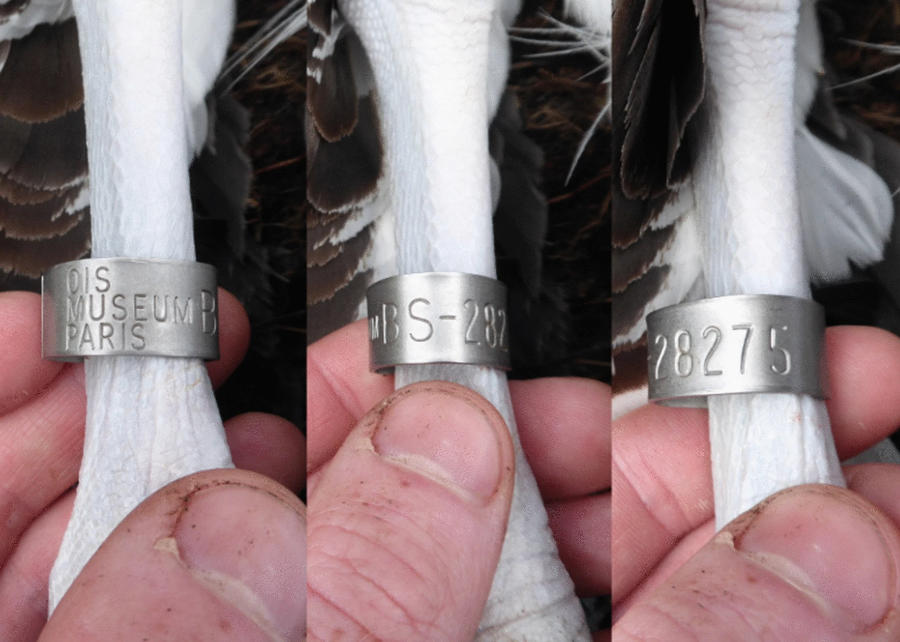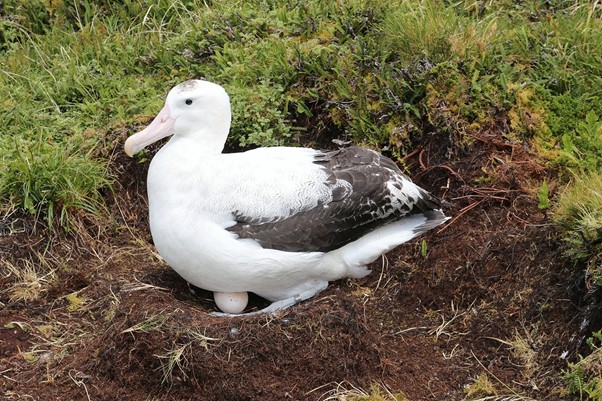
"French ring BS-28275 on an adult Tristan Albatross on Gough Island in 2017", photograph by David Kinchin-Smith
Alex Bond (Bird Group, Department of Life Sciences, The Natural History Museum, Tring, UK) and colleagues have published open access in the journal Polar Biology on a Critically Endangered Tristan Albatross Diomedea dabbenena that visited the Crozet Islands before returning to Gough Island to breed.
The paper’s abstract follows:
“Albatrosses and other seabirds are generally highly philopatric, returning to natal colonies when they achieve breeding age. This is not universal, however, and cases of extraordinary vagrancy are rare. The Tristan Albatross (Diomedea dabbenena) breeds on Gough Island in the South Atlantic Ocean, with a small population on Inaccessible Island, Tristan da Cunha, ca 380 km away. In 2015, we observed an adult male albatross in Gonydale, Gough Island, which had been ringed on Ile de la Possession, Crozet Islands in 2009 when it was assumed to be an immature Wandering Albatross (D. exulans). We sequenced 1109 bp of the cytochrome b mitochondrial gene from this bird, and confirmed it to be a Tristan Albatross, meaning its presence on Crozet 6 years previous, and nearly 5000 km away, was a case of prospecting behaviour in a heterospecific colony. Given the challenges in identifying immature Diomedea albatrosses, such dispersal events may be more common than thought previously.”

"An adult male Tristan Albatross breeding on Gough Island in 2015 with French ring BS28275 visible on the left leg", photograph by Derren Fox
With thanks to Robert Vagg. Photographs are from the publication.
Reference:
Bond, A.L., Taylor, C., Kinchin-Smith, D., Fox, D., Witcutt, E., Ryan, P.G., Loader, S.P. & Weimerskirch, H. 2020. A juvenile Tristan albatross (Diomedea dabbenena) on land at the Crozet Islands. Polar Biology doi.org/10.1007/s00300-020-02786-0.
John Cooper, ACAP Information Officer, 01 January 2020

 Español
Español  English
English  Français
Français